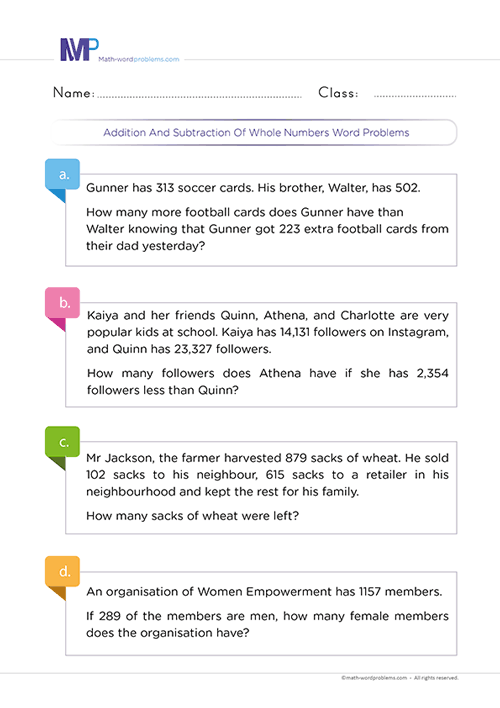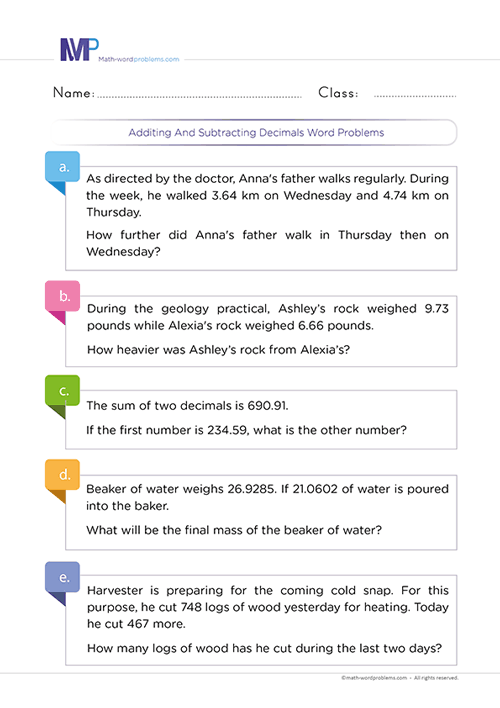 How do you solve addition and subtraction of fractions with unlike denominators word problems?
How do you solve addition and subtraction of fractions with unlike denominators word problems?
How do you solve addition and subtraction of fractions with unlike denominators word problems is a question that all 5th graders desire to know. So, we are here to offer compelling and easy steps on what to do when they encounter complex word problems involving addition and subtraction of fractions with unlike denominators grade 5.
It is interesting to note that your kids will be able to identify the problem type very quickly, brainstorm on several technical ways to solve it, and come up with even a diagrammatic representation of the problem.
As such, they can immediately provide the exact mathematical equation needed to solve the problem in less than no time.
Steps on how to solve addition and subtraction of fractions with unlike denominators word problems
Learn how to solve addition and subtraction of fractions with unlike denominators word problems in the most effortless way using straightforward methods and strategies.
As mentioned above, identifying the problem statement, structure or type is not always easy for kids. That is why we have designed real-life examples below with technical steps for learners to efficiently solve word problems on addition and subtraction of fractions with unlike denominators.
Step 1: IDENTIFY THE PROBLEM
To identify the problem, start by figuring out the scenario the problem wants you to solve. I.e., sort out the vital fractions and keywords in the word problem. Furthermore, use these keywords to identify whether the problem involves an addition or a subtraction operation.
- Now, suppose it is adding fractions with unlike denominators word problems. In that case, you will see at least one of the keywords below: - add, plus, more, total, in total, increase, together, Altogether, combined, sum, grow, join, both, in all, and how many in all, how much, etc.
- However, suppose it is subtracting fractions with unlike denominators word problems. In that case, you will see at least one of the keywords below in the word problem: - less, less than, excluding, minus, take away, left, decrease, difference, fewer, deduct, remain, change, how many more, left over, less than, how much longer/shorter, how much farther, fewer than, discount, etc.
- ***
Note: One key Element for learners to understand is that they should not always rely on keywords alone. That is to say; the same keyword can have different meanings in different word problems.
For this reason, we reiterate on the importance of reading the question very carefully to understand the situation that the word problem is describing, then figure out exactly which operation to use
Step 2: STRATEGIZE OR GATHER RELEVANT INFORMATION
Now, how will you solve or tackle the word problem?
- First, from the keyword(s), you will determine if you need to add or subtract or perform any other operation.
- However, it would be best not to rely only on keywords alone. Instead, try to understand the situation that the problem is describing.
- Also, when adding and subtracting fractions, the fractions must have the same denominators.
- If your fractions already have the same denominator, then you are good to go.
- If not, you must find the lowest common denominator (LCD).
- Then write equivalent fractions with the LCD you just found by multiplying the given fractions by a suitable number to achieve fractions with the same denominator.
- Now, after knowing which operation you will perform, construct short expressions/sentences to represent the given word problem.
Step 3: SET UP AN EQUATION
Here, we are supposed to write down a numerical equation representing the information given in the word problem.
Step 4: PROVIDE A SOLUTION
- Since you are dealing with fractions with unlike denominators;
- First, find the LCD and write equivalent fractions with the LCD you just found by multiplying the given fractions by a suitable number to achieve fractions with the same denominator.
- Then, add or subtract the fractions by adding or subtracting the numerators together while leaving the denominator the same.
- In addition to this, simplify the fraction if possible.
- Also, do not forget to include the unit of measurement in your final answer, if any.
Step 5: CHECK YOUR WORK
To conclude, ask yourself this question. “Does my answer make sense?” If “YES,” you are done. If “NO,” go back to step 1 and start all over again
Examples of how to solve addition and subtractions of fractions with unlike denominators word problems.
Example one: How to subtract fractions with unlike denominators word problems.
Step 1: The important fractions here are
Step 2: How will you solve the problem? From the keyword “how much father,” it is clear that the question asks to find the difference of the given fractions. Hence, this is a subtraction problem.
Now, we will construct short expressions/sentences to represent the given word problem.
- Distance he covers to school every day =
of a mile - Distance he has already covered today =
of a mile - Therefore, the distance left to be covered = the distance he usually covers every day – the distance he has already covered.
Step 3:Now, write down a numerical expression to represent the bolded sentence in step 2 above to solve this word problem:
Step 4: From step 3 above, since the denominators are not the same;
- Find the LCD of 4 and 2. Write equivalent fractions with the LCD you found by multiplying the given fractions by a suitable number to achieve fractions with the same denominator.
- Then, subtract the fractions by subtracting the numerators together while leaving the denominator the same.
- In addition to this, simplify the fraction if possible.
- Also, do not forget to add the unit of measurement to your final answer, if any.
(Since 4 and 2 are both factors of 4, you can use 4 as the least common denominator)
So, he has to walk
Step 5: Check out your work by interpreting the answer in the context of the problem. If the interpretation makes sense, then “YES,” you are done. If “NO,” go back to step 1 and start all over again.
Example two: How do you solve addition and subtraction with unlike denominators word problems?
Step 1: The important fractions here are
Step 2: How will you solve the problem? From the situation that the problem is describing and the keyword “altogether,” it is clear that the question demands that you find the sum of the given fractions. Hence, this is an addition operation problem.
After knowing which operation you are going to perform, Construct short expressions/sentences to represent the given word problem.
- Quantity of a cake Perez ate =
- Quantity of a cake Jones ate =
- Quantity of a cake Jack ate =
- Therefore, the quantity of cake they ate altogether = the quantity of cake Perez ate + the quantity of cake Jones ate + the quantity of cake Jack ate
Step 3: Now, write down a numerical equation to solve this word problem:
Step 4: From step 3 above, you’ll notice that the denominators are not the same;
- Find the LCD of 4 and 2. Write equivalent fractions with the LCD you found by multiplying the given fractions by a suitable number to achieve fractions with the same denominator.
- Then, subtract the fractions by subtracting the numerators together while leaving the denominator the same.
- In addition to this, simplify the fraction if possible.
- Also, do not forget to include the unit of measurement in your final answer, if any.
(Since 5, 3, and 7 are all factors of 105; you can use 105 as the least common denominator)
So, they ate
Step 5: Check out your work by interpreting the answer in the context of the problem. If the interpretation makes sense, then “YES,” you are done. If “NO,” go back to step 1 and start all over again.





